
The Power of SMS Automation and Why Your Business Needs It
Every missed text is a missed opportunity. Customers expect quick, timely updates, but manually sending messages takes time away from running your business.
SMS automation helps solve this problem by allowing you to send automatic text messages based on schedules, customer actions, or specific triggers. With the right system, every message reaches your customers without having to send each one yourself.
In this article, you’ll learn how SMS automation works and the benefits of sending automatic text messages. We’ll also cover key features to look for in an SMS platform and how tools like Textellent help simplify communication.
If you want to reduce manual texting, improve response rates, or create a smoother customer experience, this guide will help you build a messaging strategy that works.
What Causes SMS Campaigns to Fail?
Many businesses think text message automation will automatically boost engagement, increase sales, and improve customer loyalty. However, most SMS automation campaigns fail because they lack strategy, timing, and personalization.
Instead of encouraging customers to take action, poorly executed campaigns lead to low response rates, high opt-out rates, and wasted marketing budgets.
Here are some of the biggest reasons why your SMS campaigns may not resonate with your target audience:
Messages Feel Too Robotic
Some automated SMS campaigns lack a human touch, which makes them feel like machine-generated alerts rather than meaningful communication. Customers can tell when a message is overly formal or vague.
Messages that feel personal and friendly create a stronger connection with the customer, increasing the chances that they will read and respond.
Customers receive dozens of texts from brands every week, and if yours sounds like every other promotional message, they will unsubscribe entirely.
Overuse of Generic Templates
A major issue in SMS marketing is the overuse of generic templates. Many businesses send the same “Flash Sale! 20% Off Today!” messages without any personalization. Customers see these texts as spam because they lack relevance.
Bad Timing Kills Engagement
Even the best-written SMS will fail if sent at the wrong time. Many businesses blast messages without considering when their audience is most active, which can lead to low response rates.
Sending a lunch discount at 10 PM, a flash sale alert at 6 AM, or a reminder at midnight frustrates customers rather than engaging them. You must consider when customers are most likely to read and act on a message.
Lack of Context and Personalization
Another reason SMS campaigns fail is that businesses send one-size-fits-all messages without considering customer behavior.
Customers respond better when automated text messages are based on real interactions rather than random promotions.
If a customer browsed running shoes but didn’t buy them, they should receive a personalized reminder about the item they viewed instead of a common “We have a sale” text.
No Option for Two-Way Communication
Many SMS campaigns fall short because they do not allow customers to reply. One-way messaging makes customers feel like they are being talked at instead of engaged with.
For example, an order confirmation that simply says:
“Your order has been shipped. Thank you for your purchase.”
Does not allow for any follow-up questions. Instead, a better approach would be:
“Hi Chris! Your order #5678 has shipped. Want real-time tracking updates? Reply TRACK for details!”
How a Smart SMS Strategy Actually Works
By now, you understand that mass-texting your customers with broad promotions won’t get you the results you want.
If your SMS campaigns aren’t delivering results, it’s not because SMS doesn’t work. It’s because your approach might be pushing customers away instead of drawing them in.
A spammy SMS strategy prioritizes mass messaging over relevance, sending standard texts that often feel intrusive. These messages arrive at the wrong time, lack personalization, and fail to provide clear value to the customer.
In contrast, a smart SMS strategy prioritizes timing, personalization, and customer engagement. Here’s how you can improve your SMS strategy:
Send Messages Based on Customer Actions
Most businesses make the mistake of sending SMS messages on a fixed schedule without considering what the customer is actually doing. But SMS works best when it’s triggered by customer behavior.
If a customer browses a product and adds it to their cart but doesn’t complete the purchase, they are clearly interested but need a little push. Instead of waiting for them to come back on their own, an automated SMS can remind and encourage them to complete the order.
It works because it feels timely and relevant rather than just another sales pitch. Instead of blasting promotions to every customer, you’re reaching out to the right person at the right time.
Why Timing Is Everything
Even a well-crafted SMS will fail if sent at the wrong time. A smart SMS strategy considers when customers are most likely to engage and send messages accordingly.
If you own a retail store, sending a sale reminder in the evening when people have time to shop is more effective than sending it in the morning while they’re at work.
For appointment-based businesses, sending a reminder a day before and then again a few hours before helps reduce no-shows. If you send a reminder too early, people might forget. If you send it too late, they might not have time to reschedule.
Good timing increases engagement naturally because it aligns with when people are already thinking about what you’re offering.
Making Messages Personal
If your SMS messages feel like they could be sent to anyone, they won’t stand out. Customers expect you to remember their preferences and past interactions.
Message personalization makes texts feel like they were written just for them rather than another mass message. It works because it refers to the customer’s past interests, which makes it much more likely to grab her attention.
Aside from adding a customer’s name, personalization is also about tailoring messages to what they actually care about. You can offer a special deal or discount coupons based on previous interactions or highlight products that align with the customer’s interests.
Encourage Customer Interaction
Most SMS campaigns become unsuccessful because they only send automated SMS messages but never invite responses. Customers don’t want to feel like they’re being talked at; they want to engage.
If you’re confirming an appointment, you can ask for confirmation to make it easy for customers to take action, and it also helps reduce no-shows.

You can also use SMS to collect feedback after a purchase or service. When customers can reply and engage, they feel more connected to your brand. It also gives you valuable feedback on what’s working and what needs improvement.
Key Components of a Successful SMS Automation System
For SMS automation to work, it must include triggers, segmentation, personalization, compliance, and integration with your other marketing tools. Here’s how each component plays a critical role in making your SMS campaigns more effective and engaging.
Automation Triggers
Triggers determine when a message is sent based on a customer’s action. Instead of manually sending texts, an automation system responds to real-time behavior.
If a customer books an appointment, they should instantly receive a confirmation text, followed by a reminder the day before.
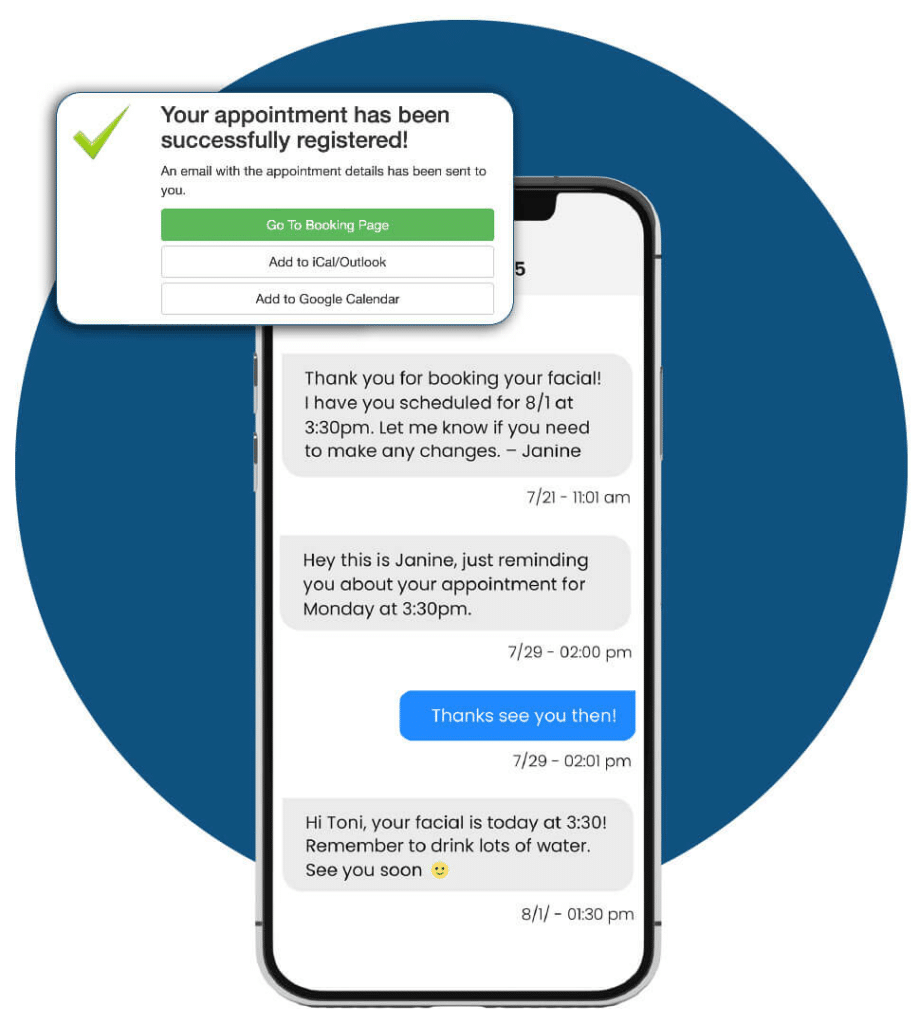
The goal of triggers is to keep communication flowing naturally without making customers feel like they’re getting random, unrelated messages. Well-timed automation encourages engagement by sending texts when customers are most likely to act.
Audience Segmentation
Not every customer is the same, so not every SMS should be the same. Customer segmentation allows you to send texts based on customer purchases, engagement level, interests, or location.
A first-time buyer, for example, should receive a welcome message with a special offer.
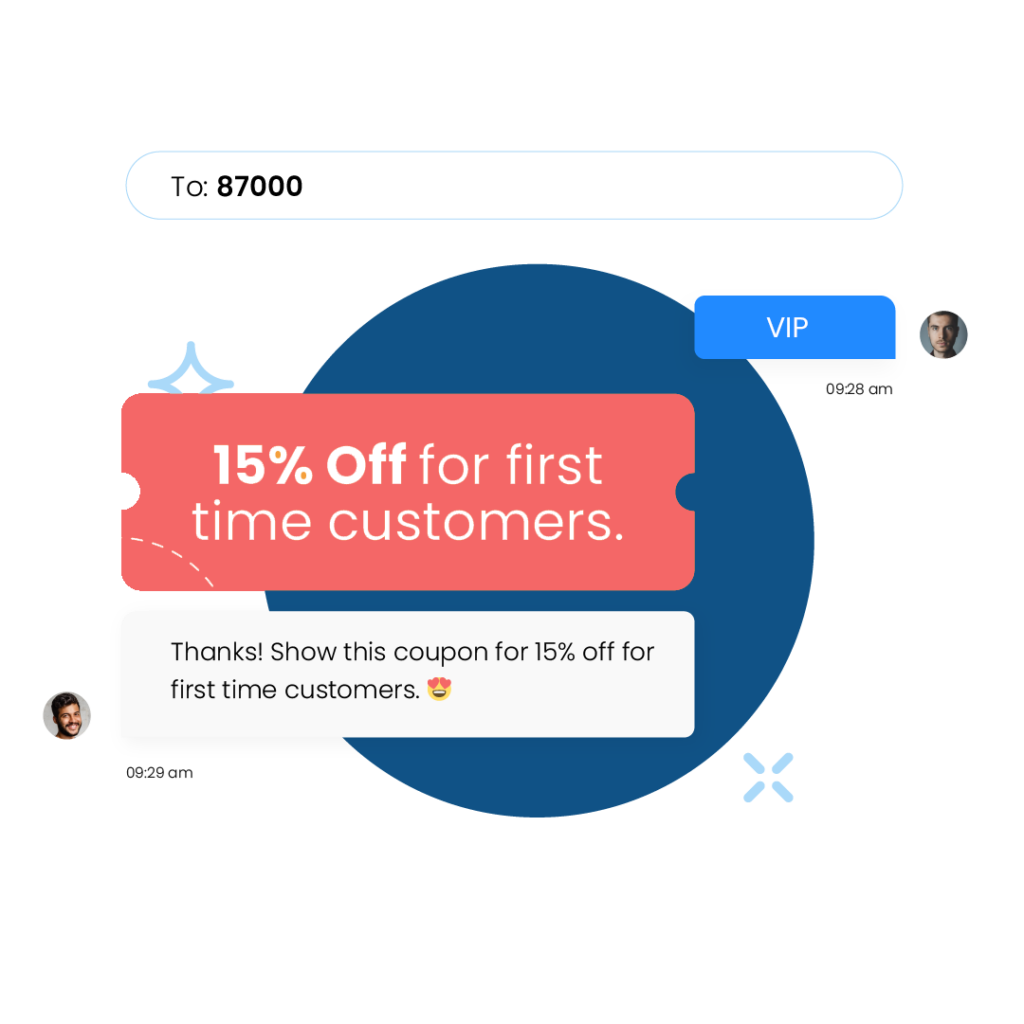
A repeat customer might appreciate early access to a new collection, or someone inactive for months could receive a friendly re-engagement message.
A one-size-fits-all approach often leads to customers ignoring texts, while targeted messaging increases the chances of a response.
Personalization
Customers can tell when a message is part of a mass campaign; if it feels impersonal, they are less likely to engage.
When automated text messages feel thoughtful and relevant, they create a stronger connection between businesses and customers. Personalization makes SMS automation feel human, which encourages higher response rates and long-term engagement.
Compliance With SMS Regulations
Automated SMS campaigns must comply with texting regulations to avoid fines and maintain customer trust. You must make sure every recipient has explicitly opted in before sending messages.
It’s also important to provide a simple way to unsubscribe so customers don’t feel trapped in a never-ending stream of texts. A well-handled opt-out process protects your business’s reputation and keeps engagement rates high.
Integration With Other Marketing Channels
SMS automation is most effective when it works alongside other marketing tools rather than operating in isolation. You can integrate SMS with email, CRM systems, social media, and customer support tools to create an exceptional experience for your customers.
If you’re running a retail store, you could send an email announcing a sale, followed by an SMS reminder for customers who showed interest but didn’t make a purchase.
Combining SMS with other channels keeps customers receiving consistent communication without feeling overwhelmed. When done correctly, integration improves customer satisfaction.
Is SMS Automation Worth the Cost?
If manual texting is taking up your valuable time, automation becomes a convenience.
However, automated SMS service cost may depend on message volume, features, and platform capabilities. Some providers charge per message, while others offer subscription-based pricing with different tiers depending on business needs.
Factors that influence SMS pricing include:
- Number of messages sent per month: Higher volumes often come with lower per-message rates.
- Automation features: Platforms that offer recurring messages, drip campaigns, and AI-driven responses may have higher pricing tiers.
- Integration capabilities: SMS services that sync with CRMs, scheduling tools, and marketing platforms can add value but may affect costs.
- Carrier fees and international texting: Some providers charge extra for texts sent to different regions.
With Textellent, you get transparent pricing that scales with your needs.
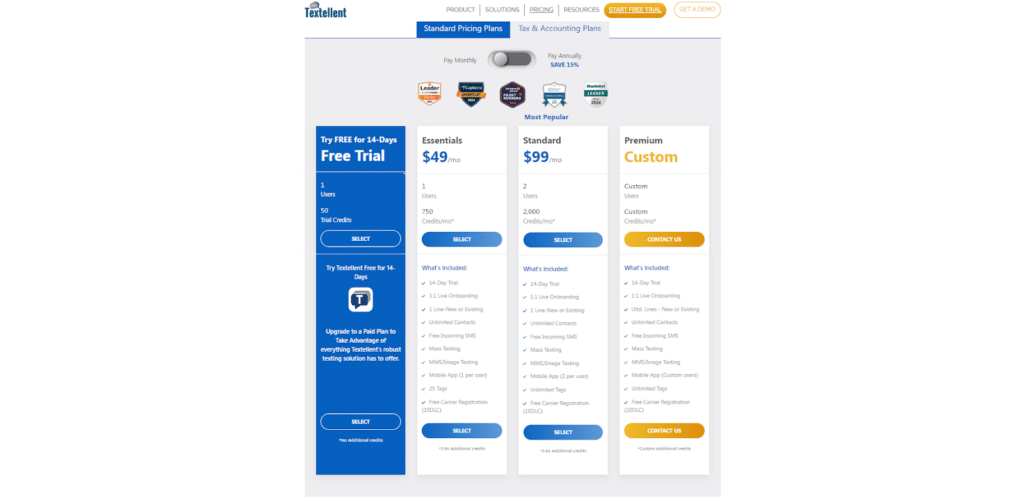
- 14-Day Free Trial – Get started with 25 SMS credits and access for one user to explore the platform’s features.
- Essentials plan ($49/month) – Ideal for small businesses, this plan includes 750 SMS credits, perfect for moderate messaging needs.
- Standard plan ($99/month) – Designed for growing businesses, offering 2,000 SMS credits along with advanced messaging capabilities.
- Premium plan (custom pricing) – Tailored for businesses with high-volume messaging needs, with additional customization options available.
This texting platform offers flexible plans that support bulk messaging and automation workflows, all while keeping costs manageable.
Sign up for a free trial to experience Textellent or request a demo consultation to find the best plan for your business.
How Textellent Makes SMS Automation Easier
Setting up SMS automation can be overwhelming, especially when managing large customer lists, scheduling messages, and complying with texting regulations.
Business texting platforms help speed up the entire process and make it easy to send personalized, well-timed messages without constant manual effort.
Automated texting services like Textellent allow you to automate text campaigns so your messages reach the right people while maintaining high engagement and SMS compliance standards.
Turn Any Business Phone Into a Texting Number
Many businesses still rely on separate phone numbers for calls and texts, which can confuse customers. If someone tries texting your landline, they might assume you’re unavailable when their message doesn’t go through.
Textellent solves this by enabling texting on your existing landline or VoIP number so customers can reach you in one place for both calls and texts.
Instead of missing potential business because customers can’t text you, they can send a quick message anytime, just like they would with any mobile contact.
Automate Replies and Save Time
Customers expect quick responses, but answering every message manually takes too much time.
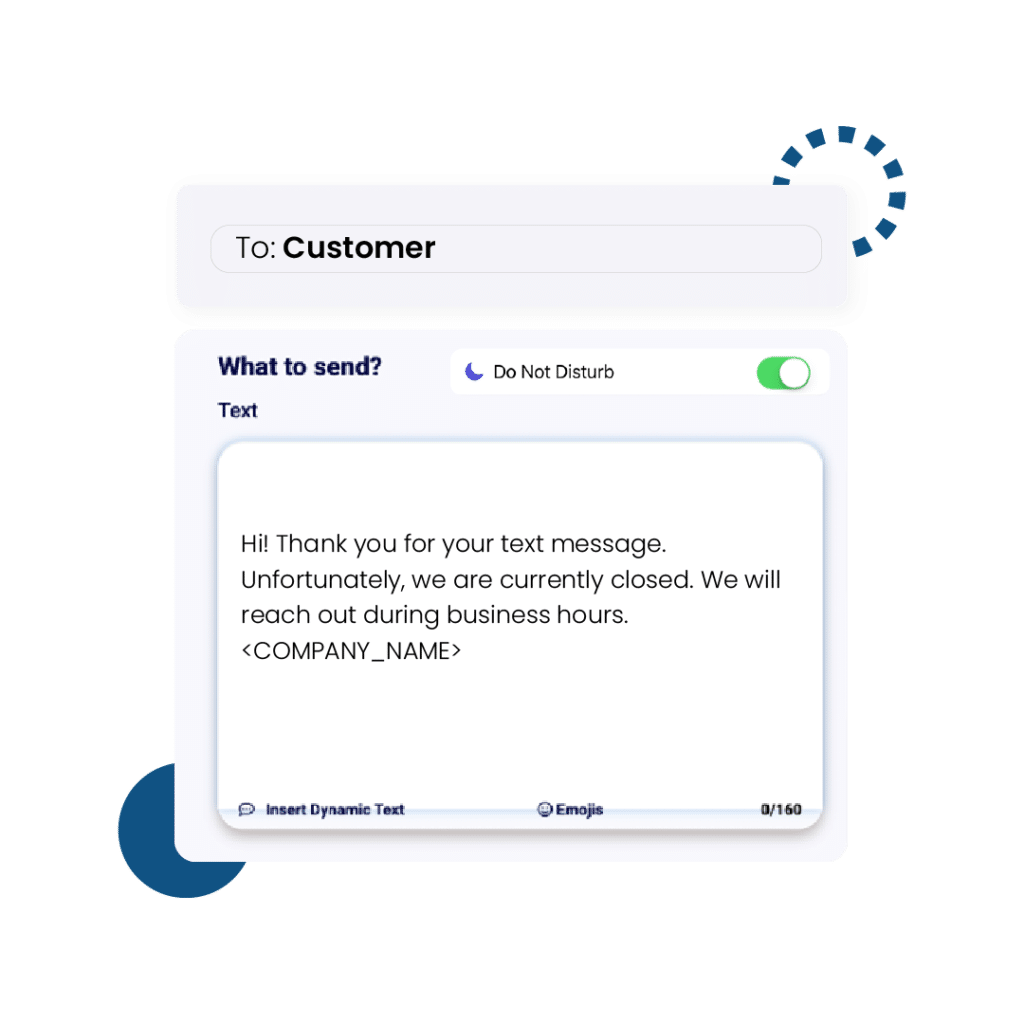
If someone texts outside of business hours, an automated response can let them know when to expect a reply. Instead of manually confirming appointments, you can set up an autoresponder message that is sent immediately after a booking.
Schedule Texts and Recurring Reminders
Instead of sending scheduled text messages one at a time, you can set them in advance so they go out at your preferred time.
For ongoing updates, recurring text messages make it easy to remind customers about upcoming payments, scheduled appointments, or important deadlines.
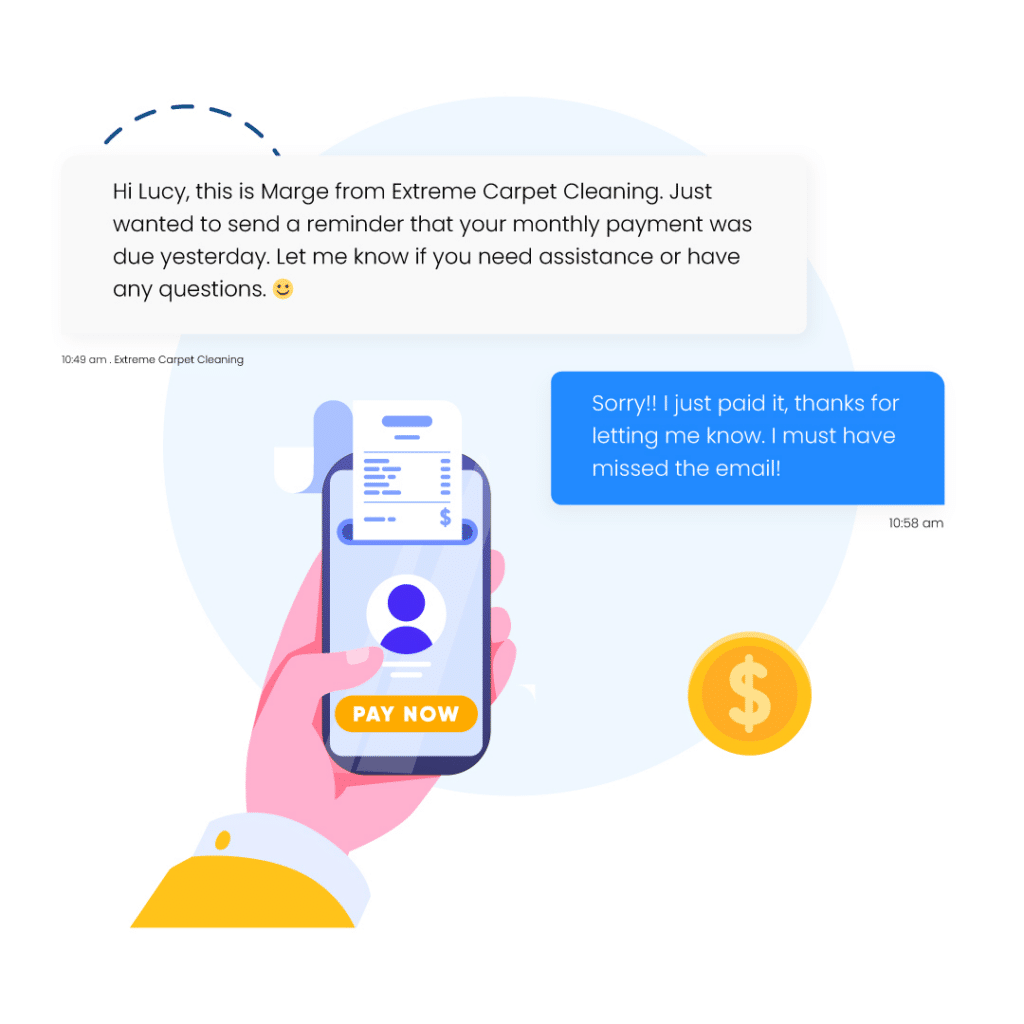
Automated messages help maintain consistency and prevent missed communications.
Personalize Mass Texts
Sending messages to a large audience doesn’t mean they have to feel generic.
Textellent allows you to personalize bulk texts with customer names, past purchases, and appointment history. Small details like these make SMS marketing feel genuine and engaging to increase the chances of a response.
Keep Conversations Going With Two-Way Messaging
Customers expect businesses to respond when they have questions, not just send reminders and promotions. With Textellent’s two-way messaging, you can continue the conversation without requiring customers to switch to email or phone calls.
If a customer receives an appointment reminder but needs to reschedule, they can simply reply to the message. Two-way messaging gives them a direct and convenient way to interact with your business.
Build Your SMS List With Keywords and Short Codes
Growing your SMS subscriber list can be slow if customers have to manually enter a phone number to opt in. Textellent makes it easy by letting them sign up using keywords and shortcodes.
Offering a discount to new customers can also promote a simple text-to-join option. If you simplify the opt-in process, it can attract more customers while making it easier for them to engage.
Track SMS Performance and Manage Opt-Outs
Sending messages is just one part of an SMS strategy. You also need to know how they’re performing. Textellent provides detailed analytics so you can see which texts get responses and adjust your approach accordingly.
If a certain promotion doesn’t generate much interest, you can test different timing, wording, or audience segments.
Opt-out management is also handled automatically. If a customer decides to unsubscribe, the system immediately removes them from your list to prevent any accidental follow-ups.
Sync SMS With Other Business Tools
A strong SMS strategy doesn’t work in isolation. Integrating Textellent with your CRMs, scheduling apps, and e-commerce platforms connects your texting efforts with other customer interactions.
If keeping up with texts has become overwhelming, or if you’re missing customer messages, it’s time to simplify your approach. Textellent helps automate follow-ups, personalize bulk texts, and track engagement, all while reducing the time spent managing SMS one by one.
Save Time and Increase Engagement—Automate Your SMS With Textellent
Keeping up with customer communication can be challenging, especially when managing appointment reminders, follow-ups, and promotional messages.
Without a structured system, you may struggle to send messages on time, which can lead to missed opportunities and disengaged customers. A delayed appointment reminder might result in a no-show, while an unanswered inquiry could drive a potential sale elsewhere.
Textellent simplifies SMS automation, making sure you reach customers without manually texting. Automated appointment confirmations, reminders, and promotional updates can be scheduled or triggered based on customer actions.
With a reliable SMS automation system in place, you can speed up communication while staying responsive to customer needs.
If your texts aren’t getting the response you want, it’s time to move beyond mass messaging and start making your SMS campaigns feel more personal and relevant.
Sign up for a free trial and experience how effortless business texting can be with Textellent!
FAQs About SMS Automation
What is SMS automation?
SMS automation allows you to send text messages automatically based on triggers, schedules, or customer actions. You can set up workflows for appointment reminders, payment notifications, follow-ups, and promotional messages.
Platforms like Textellent make this process simple by letting you send hands-free messages that improve customer engagement while saving time.
How to send 1,000 text messages at once?
To send 1,000 text messages at once, you need an SMS platform that supports mass texting. With Textellent, you can create a message with customized details and schedules or instantly send texts to thousands of recipients at once.
Mass texting is useful for event reminders, promotions, urgent notifications, and recurring messages, where you can communicate with the audience without overwhelming their teams.
Is it legal to send automated text messages?
Yes, but you must follow texting regulations such as the Telephone Consumer Protection Act (TCPA) in the U.S. Customers must explicitly opt-in before receiving promotional texts, and you must provide an opt-out option in every message.
Platforms like Textellent handle compliance by recording opt-ins and opt-outs and providing built-in templates for legally compliant messaging.
Is SMS by Zapier free?
Zapier provides an SMS integration that connects apps like Gmail, Slack, and CRMs with text messaging services. However, SMS by Zapier is not entirely free.
Zapier’s free plan includes limited tasks, which means only a few automated messages can be sent per month.
Paid plans offer more automation and connections but still require an SMS provider (like Textellent) to actually send the messages.
If you need scalable SMS automation, using a dedicated platform like Textellent is a better option that provides unlimited mass texting, personalization, and compliance management.





